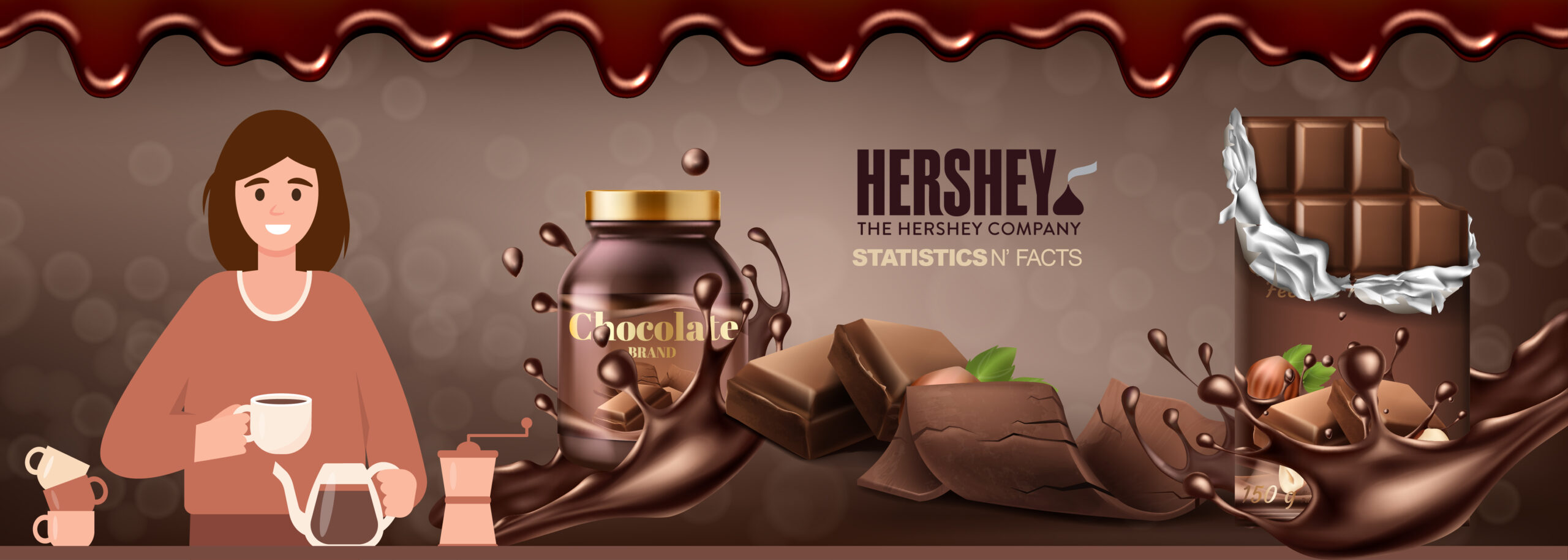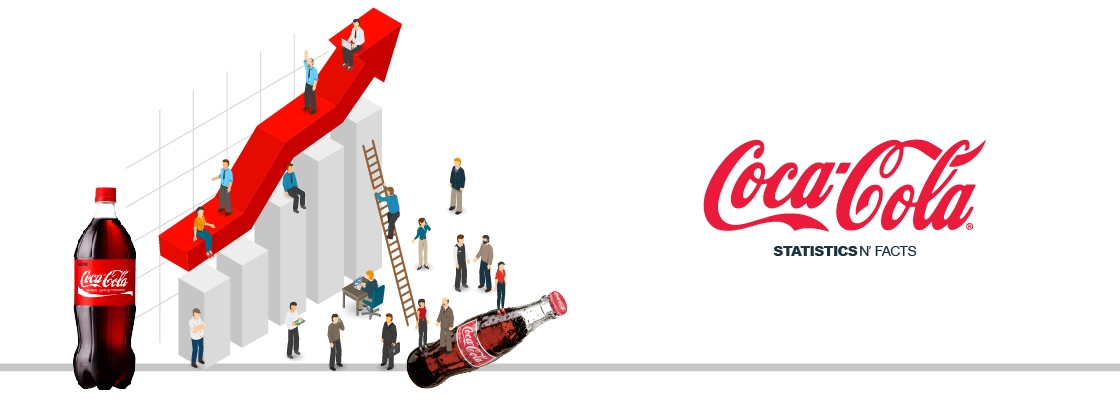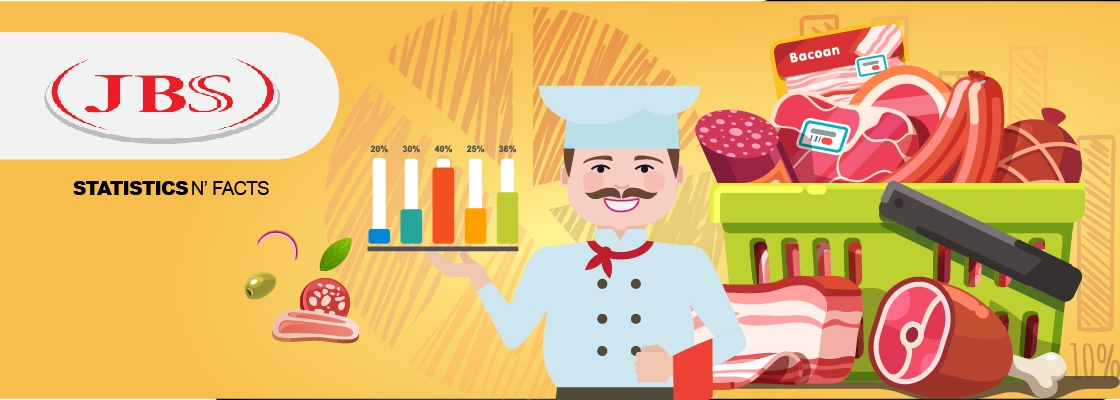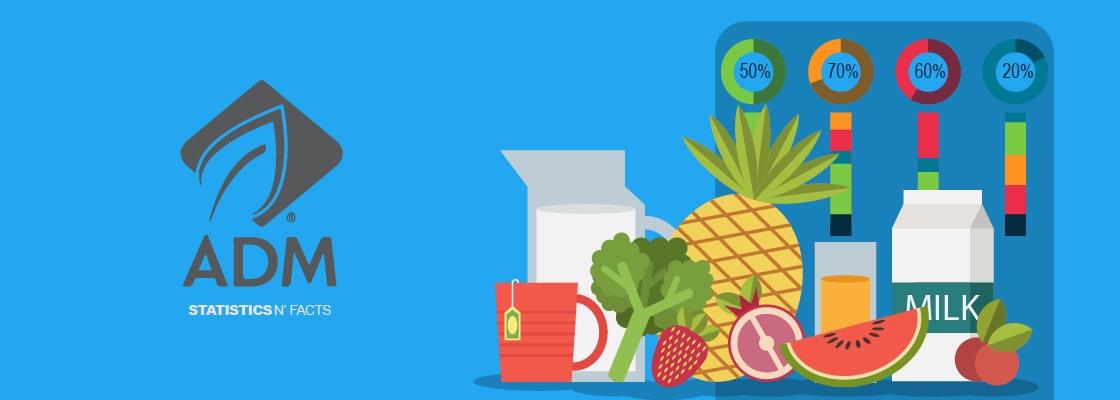The Hershey Company Statistics: The Hershey Company is a chocolate and sugar confectionery company that manufactures and sells its goods. North America, International, and Other are the geographical segments in which the company operates. In the United States and Canada, the North American segment is responsible for the company’s traditional chocolate and non-chocolate confectionery market positions, as well as its grocery and snacks market positions. The International and Other segment is a combination of all other operating segments that aren’t separate material, such as those outside of North America where the corporation operates. Hershey’s, Reese’s, and Kisses are among the company’s brands. Milton S. Hershey created the company in 1894, and it is headquartered in Hershey, Pennsylvania.
Hershey Company Statistics:
Global Net Sales of the Hershey Company from 2006 to 2020 (in US$ Billion)
Net Sales YoY increase of the Hershey Company Worldwide (2008-2020)
Advertising Expenditure of the Hershey Company Worldwide from 2008 to 2020 (in US$ Million)
Number of Full-Time Employees (2008-2020)
Gross Profit of the Hershey Company Worldwide from 2013 to 2020 (in US$ Billion)
Global Net Sales of the Hershey Company 2006-2020, by region (in US$ Billion)
Operating Profit of the Hershey Company 2006-2020 (in US$ Billion)
Fun Facts
- In the year 1900, Milton S. Hershey created the original Hershey’s chocolate bar formula. Hershey Kisses were introduced seven years later.
- Candy became extremely popular in the 1920s as a means of self-indulgence during Prohibition, when alcohol was prohibited.
- Milton S. Hershey owned the Lancaster Caramel Company before creating Hershey’s milk chocolate formula.
- Harry Burnett Reese (who actually worked at a Hershey’s dairy farm) invented Reese’s peanut butter cups.
- Reese’s was later backed by Hershey’s. Because of this partnership, Hershey’s chocolate is utilized in every Reese cup.
- Prior to this partnership, Hershey Company workers were among the first faithful Reese’s customers.
- Reese’s peanut butter cups have their distinctive shape because when Reese was initially experimenting with the confections, using a baking tin was the only way to allow the chocolate to melt properly around the peanut butter.
- Over-roasting the peanuts before converting them into peanut butter is the key to making the ultimate Reese’s peanut butter cup. That’s how it gets its distinctive gritty texture.
- In the 1950s, candy first started being distributed for Halloween. Prior to that, children used to get tiny gifts or cash for the holidays.
- The Reese’s Company generates about US$2.5 billion in revenue each year.
History
- 1886: Hershey was established when Milton S. Hershey opened the Lancaster Caramel Company in Pennsylvania.
- 1894: He formed the Hershey Chocolate Company as a subsidiary of his Lancaster caramel business.
- 1900: The company sold the Lancaster Caramel Company.
- 1900: In addition to chocolate coatings, Hershey made breakfast cocoa, sweet chocolate, and baking chocolate.
- 1905: Hershey began the mass production of milk chocolate products.
- 1907: In order to expand its product line, the company began producing a flat-bottomed, conical milk chocolate candy which Mr. Hershey decided to name ‘Hershey’s Kisses Chocolates.
- 1916: In search of a more dependable source for raw materials, especially sugar, Hershey started acquiring cane sugar plantations and constructing refineries in Cuba.
- 1924: The Hershey’s Kisses Chocolate brand was trademarked.
- 1925: Hershey introduced new products, including Mr. Goodbar.
- 1926: The company launched Hershey’s Syrup.
- 1927: The company was reorganized, and its shares were made public.
- 1927: Hershey was incorporated as the Hershey Chocolate Corporation.
- 1943: The company introduced the Tropical Chocolate Bar, a heat-resistant bar with an improved flavor, especially for use by the US army.
- 1963: Hershey acquired the H.B. Reese Candy Company.
- 1968: It continued expanding its confectionery product lines, acquiring related companies, and even diversifying into other food products.
- 1968: The company was renamed the Hershey Foods Corporation.
- 1977: The company acquired Y&S Candies.
- 1986: The company acquired Dietrich’s confectionery operations.
- 1988: The company acquired Peter Paul/Cadbury’s US confectionery operations.
- 1990: The company acquired Ronzoni Foods.
- 1999: Hershey sold its US pasta business to New World Pasta.
- 2000: Hershey sold the Luden’s throat drops business to Pharmacia Consumer Healthcare, a unit of Pharmacia.
- 2000: Hershey acquired Nabisco’s Intense and Breath Freshener Mints and Gum businesses.
- 2001: The company’s Brazilian subsidiary, Hershey do Brasil, acquired the chocolate and confectionery business of Visagis.
- 2002: The company sold a few of its non-chocolate confectionery candy brands to Farley’s & Sathers Candy Company.
- 2003: Hershey signed a definitive agreement with SweetWorks for the sale of the Sixlets confectionery candy brand.
- 2003: The company, through its Mexican subsidiary, Hershey Mexico, acquired Grupo Lorena, one of Mexico’s top sugar confectionery companies.
- 2003: Hershey introduced the 1 gram Sugar Carb low-calorie bars to the market and sold certain of its gum brands to Farley’s & Sathers Candy.
- 2004: The company formed two new business groups as part of its expansion efforts: the US Confectionery and the US Snacks. The company changed its name to The Hershey Co in 2005.
- 2004: Hershey acquired Mauna Loa Macadamia Nut (Mauna Loa). It acquired Joseph Schmidt Confections (Schmidt) and Scharffen Berger Chocolate Maker (Scharffen Berger) in the same year.
- 2005: Schmidt is a premium chocolate manufacturer known for its truffles, chocolate mosaics, specialty cookies, and handcrafted chocolates presented in distinctive packaging.
- 2005: The company sold its Mr. Freeze frozen pops business in Canada.
- 2006: Hershey’s wholly-owned subsidiary, Artisan Confections, purchased the assets of Dagoba Organic Chocolates, a producer of organic chocolate bars, drinking chocolates, and baking products based in Ashland, OR.
- 2006: The company established the Hershey Center for Health and Nutrition.
- 2007: The company announced a strategic supply and innovation partnership with Barry Callebaut, the world’s largest manufacturer of cocoa, industrial chocolate, and confectionery products. The companies partnered on various research & development (R&D) activities with a focus on driving innovation in new chocolate taste experiences, premium chocolate, health, and wellness, as well as ingredient research and optimization. During the same year, Hershey entered into a joint venture agreement with Godrej Beverages & Foods, to manufacture and distribute confectionery products, snacks products, and beverages in India.
- 2008: Hershey increased the wholesale prices across its US, Puerto Rico, and other export chocolate and sugar confectionery lines.
- 2009: Hershey launched a new addition to the Hershey’s Bliss Chocolate line by introducing Hershey’s Bliss White chocolate.
- 2009: Hershey entered into a licensing agreement with HP Hood, a distributor of dairy products in the US. The agreement granted HP Hood the license to manufacture, sell and distribute extended shelf life Hershey flavored milk and milkshakes across the US.
- 2009: Van Houten Singapore (VHS) was acquired by Hershey. VHS is a developer and marketer of consumer chocolate products throughout Asia.
- 2010: The company launched Ice BreakersFrost sugar-free mints.
- 2010: The company unveiled its ‘Next Century’ modernization plan to enhance its supply chain. As part of the same, Hershey announced plans to invest about US$200 million to US$225 million.
- 2011: Hershey collaborated with Hasbro for promotional events related to the launch of Family Game Night, a video game developed for PlayStation 2 and the Nintendo Wii.
- 2011: The company also increased its wholesale prices by 9.7% across its instant consumable, multi-pack, packaged candy, and grocery lines to offset the raw material price increases.
- 2011: Hershey unveiled Reese’s Minis, the smallest Reese’s Peanut Butter Cups, and Hershey’s Drops, bite-sized drops without the candy shell. During the same year, the company introduced its first aerated milk chocolate under the name, Hershey’s Air Delight.










